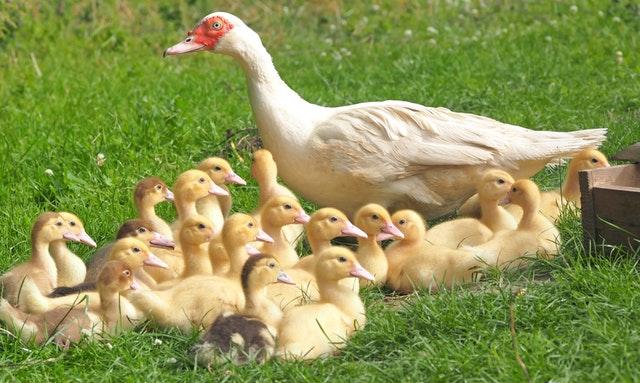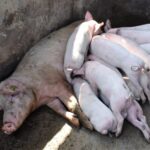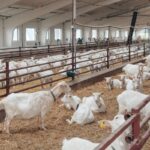Duck farming in Kenya is emerging as a profitable venture for farmers looking to diversify their income sources. Ducks are hardy, easy to manage, and produce high-value products such as eggs and meat that are in demand both locally and internationally. This article delves into the essentials of duck farming in Kenya, covering breeds, housing, feeding, farming systems, and market opportunities, while providing actionable tips for aspiring farmers.
Viral Title Suggestions
- “Why Duck Farming in Kenya Is the Next Big Agribusiness Opportunity”
- “Duck Farming in Kenya: From Egg to Profit – Here’s Everything You Need to Know”
- “How to Start and Profit From Duck Farming in Kenya”
- “The Untapped Goldmine of Duck Farming in Kenya”
Why Duck Farming?
Duck farming offers a low-cost, high-return agribusiness opportunity in Kenya. Ducks are known for their adaptability, resilience to diseases, and ability to thrive in diverse farming conditions. Their eggs and meat fetch premium prices, making them a worthwhile investment for farmers.
In comparison to chicken farming, duck farming requires minimal infrastructure and maintenance. Ducks can feed on a wide variety of food, reducing the cost of feeding while improving farm profitability. Moreover, their ability to forage makes them excellent pest controllers, as they consume snails, fleas, and grasshoppers.
Breeds of Ducks Reared in Kenya
Farmers in Kenya rear several duck breeds, each with unique advantages depending on whether the focus is on meat, eggs, or both. Here are some popular breeds:
- Ancona Duck
- Dual-purpose breed (eggs and meat).
- Known for its attractive black-and-white plumage.
- Excellent foragers and hardy.
- Indian Runner
- Primarily reared for egg production.
- Can lay up to 300 eggs per year.
- Upright posture and energetic behavior make them unique.
- Pekin Duck
- Ideal for meat production.
- Grows quickly, reaching market size in about 6-8 weeks.
- Produces tender, flavorful meat.
- Muscovy Duck
- Popular for meat production due to its lean, high-quality flesh.
- Known for its calm temperament.
- Khaki Campbell
- Highly productive egg-laying breed, producing up to 340 eggs annually.
- Hardy and suitable for different farming systems.
Housing Ducks
Duck housing in Kenya is relatively simple and cost-effective. Farmers can construct a basic shelter using locally available materials. Key considerations include:
- Ventilation: Proper airflow is necessary to maintain healthy living conditions.
- Protection: Ducks need to be safeguarded against predators and extreme weather.
- Orientation: The house should face away from direct sunlight.
- Space: Each duck requires approximately 4-5 square feet of space to roam comfortably.
Additionally, ensure the housing has a sloped floor to drain water and maintain dryness. Ducks thrive in clean and dry environments, reducing the risk of diseases.
Duck Farming Systems
There are three main systems of duck farming practiced in Kenya:
- Backyard System
- Ducks roam freely during the day, often near water bodies.
- Eggs are collected early in the morning before releasing the ducks.
- Extensive System
- Ducks are allowed to forage outdoors, particularly in paddies or wetland areas.
- Farmers save on feed costs as ducks forage for insects, snails, and plants.
- Intensive System
- Ducks are confined and fed a formulated diet, supplemented with access to water for swimming or drinking.
- Suitable for farmers targeting high productivity and controlled breeding.
Feeding Ducks
Feeding is crucial to the productivity of duck farming. Ducks are omnivores and can consume various foods, including:
- Commercial Feeds: Pellet feeds enriched with proteins and nutrients.
- Kitchen Waste: Leftover food such as rice, vegetables, and grains.
- Natural Forage: Ducks love scavenging for snails, bugs, and small fish.
For Ducklings: Feed young ducks with calcium and protein-rich diets to ensure proper growth and strong eggshells.
Water Needs: Ducks require constant access to clean drinking water. On average, a duck can drink up to 1 liter of water daily, which also aids digestion.
Reproduction and Growth
- Ducks lay one egg daily under optimal conditions.
- The incubation period for duck eggs is 28 days.
- Ducklings grow rapidly and are ready for sale or integration into breeding programs within 30 days.
Ducks have a longer productive life compared to other poultry, especially in egg production, making them a sustainable investment.
Advantages of Duck Farming
Duck farming presents numerous advantages:
- High Economic Value: Duck eggs and meat fetch premium prices in local and international markets.
- Hardiness: Ducks are resistant to many common poultry diseases.
- Pest Control: Ducks are natural exterminators of pests, reducing the need for pesticides.
- Minimal Housing Needs: Simple shelters are sufficient for ducks.
- Low Maintenance: Ducks are easy to rear and require less attention compared to chickens.
Market Opportunities for Duck Farming in Kenya
Demand for duck products, especially meat and eggs, is steadily rising in Kenya.
- Egg Market: Duck eggs sell for about Ksh 30 each, significantly higher than chicken eggs.
- Meat Market: Duck meat commands a price of Ksh 450 per kilogram and above.
- Institutional Buyers: Restaurants, hotels, and high-end eateries often include duck meat in their menus.
- Export Potential: Duck products have a growing market in international trade, especially in the Middle East and Asia.
Farmers can also sell directly at local markets or through partnerships with retailers and institutions.
Challenges in Duck Farming
Despite its benefits, duck farming has its challenges:
- Limited Awareness: Many farmers are unaware of the profitability of duck farming.
- Water Scarcity: Ducks thrive in environments with accessible water sources, which can be challenging in arid regions.
- Predators: Ducks are vulnerable to predators such as foxes and snakes.
- Limited Market Structures: While demand is growing, structured market channels for duck products are still underdeveloped.
Tips for Successful Duck Farming in Kenya
- Choose the Right Breed: Opt for breeds suited to your production goals—meat, eggs, or both.
- Ensure Proper Housing: Build secure, well-ventilated shelters to protect ducks from predators and weather extremes.
- Maintain Hygiene: Regularly clean the housing and provide fresh water to prevent diseases.
- Diversify Products: Explore value addition by selling salted duck eggs or processed meat.
- Seek Training: Attend workshops or consult agricultural extension officers for expert guidance.
The Future of Duck Farming in Kenya
With increasing awareness and demand for duck products, the future of duck farming in Kenya looks bright. The industry offers opportunities for small-scale farmers, youth, and agripreneurs seeking sustainable and profitable ventures. Investments in duck farming can significantly contribute to food security and income generation in Kenya.
Duck farming is a hidden gem in Kenya’s agribusiness sector. Whether you’re looking to start small or scale up to commercial production, ducks offer an opportunity to tap into a high-demand market with minimal initial investment.
By following best practices, choosing the right breeds, and leveraging existing market opportunities, farmers can make duck farming a lucrative and sustainable venture.





